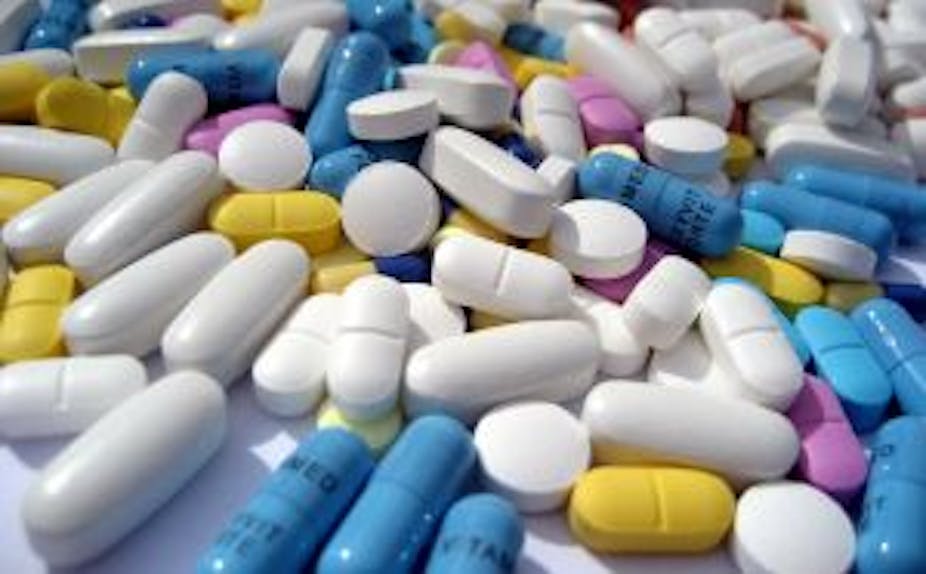Gone are the good old days when medicines had simple, easy to pronounce names such as aspirin, paracetamol and morphine.
Nowadays pharmaceutical companies almost seem to revel in giving drugs names that are near impossible to pronounce, such as phenoxymethylpenicillin (pronounced phen-oxi-methal-pen-a-sil-an) or hydrochlorothiazide (hydro-clor-o-thia-zide) or sulfamethoxazole (sol-fa-me-thox-a-zol).
To make things even more confusing, some medicines have multiple names depending on whether they have been approved for sale to the public and if companies have created their own brand name.
But despite the seemingly random selection of drug names, there’s a defined structure to how they are decided. And recently, the European Medicines Agency (the largest government agency for the approval of drugs in the world and similar to Australia’s Therapeutic Goods Administration) released draft guidelines on the selection and approval of names for new medicines.
Inventors, chemical and code names
There was a time when there were no rules for how a drug was named. Usually, it was up to the inventor to decide and, more often than not, that person named the compound after (usually) himself. Condy’s crystals, for instance, is the purple bath salt used as a disinfectant named after a chemist called Henry Condy.
Arthur Whitfield was a dermatologist who developed Whitfield’s Ointment to treat fungal infections. And then there’s Lassar’s Paste, which is used to treat nappy rash and is named for Oskar Lassar, a German scientist.
Things are different now.
Chances are that any new drug will have come from a pharmaceutical company. These companies invent hundreds or thousands of new molecules each year that they hope to turn into saleable medicines.
With this sort of volume being produced, pharmaceutical companies don’t have the time, or the need really, to name all of them. At this stage, drug molecules have two names – their chemical name and a code name.

The chemical name follows very strict chemistry rules and any chemist can determine the structure of a molecule from it. The chemical name of aspirin is 2-acetoxybenzoic acid and paracetamol is N-(4-hydroxyphenyl)ethanamide (in case you were curious).
In contrast, code names are simply an amalgamation and abbreviation of the drug company’s name and a sequential number. A drug code named GSK10093, for instance, would be the 10,093th molecule made by the company GlaxoSmithKline.
These code names are usually dropped when the molecule enters human trials. But, occasionally, a code name comes into common use, such as the morning after pill RU486.
This drug was initially developed by the company Roussel Uclaf and was called RU-38486. But this was deemed too long to say, so it was shortened to RU486.
Brand names and generics
When a drug has approval from the government, it will usually have a generic name and one or more brand names.
Generic names can be used by any pharmaceutical or marketing company. Brand names are trademarked by companies and are used for drugs they hold patents for.
The famous erectile dysfunction drug Viagra is actually a brand name owned by Pfizer. The same drug is also sold by the same company to treat hypertension (high blood pressure) under the brand name Revatio.
The generic name of the drug, which can be used by any pharmaceutical company now that Pzifer’s patent has expired, is sildenafil (pronounced sil-den-a-fil).
Generic names of most drugs are invented and assigned based on the disease they treat. If two drugs have similar sounding names, they most likely treat the same disease.
Take, for instance, platinum drugs, which are used to treat cancer. They have names ending with –platin: cisplatin, carboplatin and oxaliplatin.
Many antibiotics have names ending with –cillin (amoxicillin, piperacillin and penicillin) or –mycin (paromomycin, spectinmycin and herimycin).
Cholesterol-lowering drugs typically end with –statin (atorvastatin, fluvastatin and lovastatin) and drugs derived from monoclonal antibodies have names that end with –mab (abciximab, belimumab and ofatumumab).

A message for you
The European Medicines Agencies’ new draft guidelines for naming drugs gives brief directions on how names should be developed.
Each drug name should not:
mislead about what diseases the drug is capable of treating,
mislead about what the drug and medicine is made of,
be used for any promotional message,
be offensive in any language or have bad connotations,
be too similar to the names of other drugs (so they don’t get mixed up by health workers or patients), and finally
should give consideration to phonetics and the potential difficulties of pronunciation.
So why do companies give drugs such difficult-to-pronounce names when simpler ones would be easier for everyone? Interestingly, it’s usually only the generic drug names that are difficult to pronounce; brand names tend to be simple.
Take, for instance, the highest-selling drug in the world, the cholesterol-lowering agent Lipitor. This is the drug’s brand name; its generic name is atorvastatin (a-tor-va-sta-tin), which is much harder to say.
While there are many factors that contribute to why a drug is given a particular name, the most important is that ultimately companies want patients to buy expensive, patented drugs rather than cheaper generics. It’s the branded drugs that make their money.
A simple brand name is easier for people to remember and pronounce, and more likely to be asked for at the pharmacy. If you can’t pronounce the generic name of your medicine, you’re unlikely to ask the pharmacist for it.
So remember, don’t just buy the brand name medicine just because it’s easy to say. Buying a generic, when it’s available, is cheaper and just as effective. Clearly, there’s a lot of profit in the right name.

